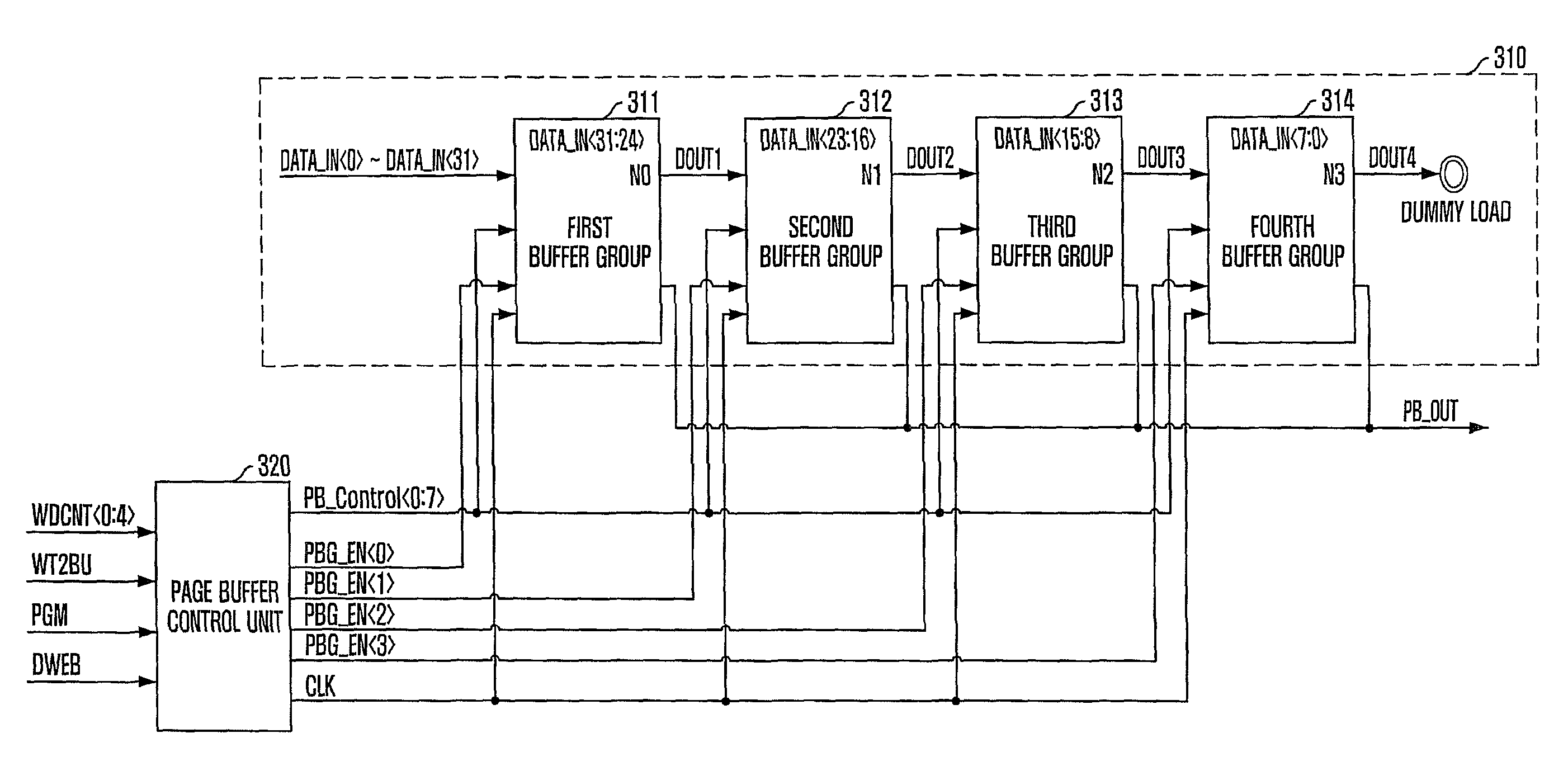Phase-change memory device
a phase-change memory and page buffer technology, applied in the direction of information storage, static storage, digital storage, etc., can solve the problems of sram having the same drawback, dram having a drawback of being volatile, and sram being disadvantageous in terms of cos
- Summary
- Abstract
- Description
- Claims
- Application Information
AI Technical Summary
Benefits of technology
Problems solved by technology
Method used
Image
Examples
Embodiment Construction
class="d_n">[0032]FIG. 4 is a diagram illustrating a structure of a buffer group of a page buffer unit of FIG. 3.
[0033]FIG. 5 is a circuit diagram of a buffer of FIG. 4 in accordance with an exemplary embodiment.
[0034]FIG. 6 is a diagram illustrating a structure of a page buffer control unit of FIG. 3.
[0035]FIG. 7 is a diagram illustrating a clock signal generating unit of FIG. 6 in accordance with another embodiment of the present invention.
[0036]FIG. 8 is a diagram illustrating a buffer selection signal PB_CONTROL0:7> and a buffer group selection signal PBG_EN0:3> corresponding to an output signal CNT0:4> of a counter.
[0037]FIG. 9 is a timing diagram illustrating a command sequence for a buffer program operation.
DESCRIPTION OF SPECIFIC EMBODIMENTS
[0038]In order to describe in detail such that those skilled in the art can easily implement the spirit and scope of the present invention, the embodiments of the present invention will be described with reference to the accompanying draw...
PUM
 Login to View More
Login to View More Abstract
Description
Claims
Application Information
 Login to View More
Login to View More - R&D
- Intellectual Property
- Life Sciences
- Materials
- Tech Scout
- Unparalleled Data Quality
- Higher Quality Content
- 60% Fewer Hallucinations
Browse by: Latest US Patents, China's latest patents, Technical Efficacy Thesaurus, Application Domain, Technology Topic, Popular Technical Reports.
© 2025 PatSnap. All rights reserved.Legal|Privacy policy|Modern Slavery Act Transparency Statement|Sitemap|About US| Contact US: help@patsnap.com



